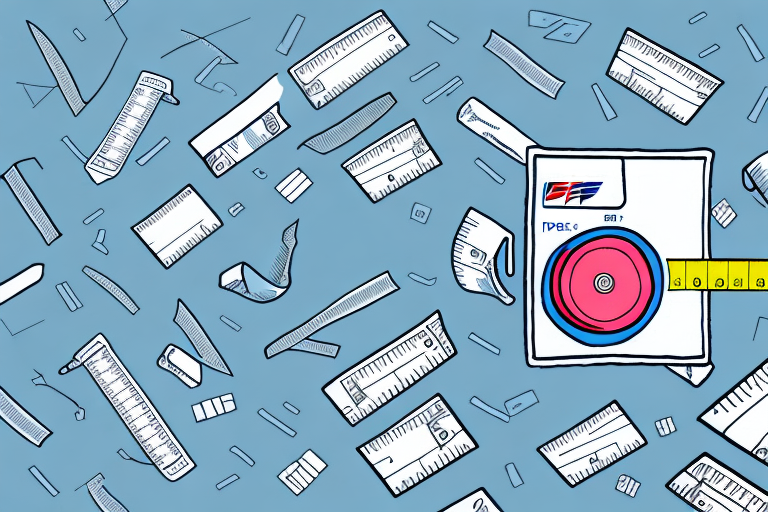Understanding Box Girth and Its Importance in Shipping
When dealing with shipping boxes, whether for a small business or personal use, understanding how to measure and calculate box girth is essential. Girth plays a critical role in determining shipping costs, and inaccurate measurements can lead to incorrect shipping rates, misplaced shipments, and unexpected expenses. This guide provides a comprehensive overview of box girth calculation, ensuring you optimize your shipping process effectively.
What is Girth?
Girth is the measurement around the thickest part of a package, typically calculated as the sum of its length, width, and height. Shipping companies often use girth in their pricing formulas to determine shipping fees accurately. Accurate girth measurements ensure that you receive the best possible rate for your package.
It's important to note that girth isn't the sole determinant of shipping costs. Weight is another significant factor, and carriers will charge based on whichever is greater between weight and girth. This means a lightweight package with a large girth may incur higher shipping costs than a heavier package with a smaller girth. Therefore, considering both weight and girth is crucial for obtaining accurate shipping cost estimates.
Measuring Box Dimensions Accurately
Before calculating girth, it's vital to measure your box's dimensions accurately. Here's how to do it:
- Measure the box's length, width, and height from the inside, rounding up to the nearest whole inch.
- Use a measuring tape to ensure precision, measuring from the longest points, including any protrusions, handles, or corners.
- Record these measurements in inches as they will be essential for calculating girth.
Always measure the inside dimensions, not the outside, to determine the available space for your package's contents. If the box has a lid or flaps, measure the height with them closed for an accurate size.
Calculating Girth: Step-by-Step Guide
Once you have the length, width, and height of your box, you can calculate the girth using the following steps:
Standard Box Girth Calculation
The standard formula for calculating girth is:
Girth = (2 x Width) + (2 x Height)
After calculating girth, you can use it alongside the box's length to determine the shipping cost based on the carrier’s pricing structure.
Be aware that some shipping companies impose maximum girth limits. If your package exceeds these limits, you may need to consider alternative shipping methods or packaging options.
Calculating Girth for Round Packages
For round boxes or cylindrical packages like tubes and pipes, the calculation differs slightly:
Girth = Diameter x π (approximately 3.14)
Measure the diameter at the widest point to ensure accuracy. If the package has a lid or cap, include its thickness in your measurement for a precise girth calculation.
Factors Affecting Shipping Costs
Several factors influence shipping costs beyond girth:
- Weight: Heavier packages typically cost more to ship. Always weigh your package accurately.
- Fragility: Fragile items require additional packaging materials like bubble wrap or packing peanuts, which can increase shipping costs.
- Destination: International shipments generally cost more than domestic ones due to longer transit distances and additional handling.
Considering all these factors ensures that you choose the most cost-effective and reliable shipping method for your needs.
Best Practices for Accurate Girth Calculation
To ensure accuracy in girth calculation, follow these best practices:
- Use a precise measuring tape or ruler designed for measuring boxes, preferably one with a curved edge for easier wrapping around the box.
- Double-check your measurements and calculations to avoid errors that could lead to increased shipping costs.
- Include the thickness of the box material in your measurements to prevent underestimating the box size.
Common Errors to Avoid
- Neglecting to account for the thickness of the box material.
- Measuring the outside dimensions instead of the inside dimensions.
- Forgetting to include protrusions, handles, or lids in your measurements.
Choosing the Right Shipping Method Based on Girth
The shipping method you select should align with your package's girth and other factors:
- Fragile Items: Opt for shipping methods that offer extra protection, such as padded envelopes or specialized courier services.
- International Shipping: Consider carriers that provide reliable tracking and faster delivery times, even if they are more expensive.
- Budget Constraints: For domestic shipments, compare different carriers to find the most cost-effective option that meets your delivery timeline.
Evaluating these factors helps in selecting a shipping method that ensures your package arrives safely and on time.
Technological Innovations in Girth Calculation
Advancements in technology have streamlined the process of calculating box girth:
- Many shipping carriers offer online tools and mobile apps that allow you to input package dimensions and automatically calculate girth and shipping costs.
- Automated measuring devices can quickly and accurately measure package dimensions, reducing manual errors.
- Integration with shipping software can help track and manage multiple shipments efficiently.
Leveraging these technological tools enhances accuracy and efficiency in your shipping operations.
Conclusion
Accurately calculating the girth of a box is a fundamental step in preparing your packages for shipping. By taking precise measurements and understanding the factors that influence shipping costs, you can optimize your shipping process, reduce expenses, and ensure timely delivery of your packages. Utilize available tools and best practices to maintain accuracy and efficiency in your shipping endeavors.




















